Excessive edible oil consumption has become so deeply ingrained in our everyday cooking routines that we barely notice it anymore. That generous splash in the kadhai, the golden drizzle over parathas, the deep-frying reserved for weekends—all these small habits silently stack up. And while they may seem like minor indulgences, over time, this quiet excess begins to work against our health in ways we may not immediately recognize.
For many of us, oil equals flavour, tradition, and love.
It’s almost cultural—the belief that more oil means more taste or that a well-oiled dish is a well-cooked one.
Even in homes that are health-conscious and ingredient-aware, edible oil consumption often goes unnoticed.
It’s not intentional—it’s habitual.
A little more while roasting, another tadka ‘just to finish it off.’
At the NXT Conclave 2025, we had the honor of showcasing the Bharat Dish and Lifestyle Tips—a tribute to India’s rich and diverse food and wellness heritage. It was inspired by Prime Minister Narendra Modi Ji’s vision of celebrating our local superfoods and returning to mindful eating. But we didn’t stop at the plate.
We also shared simple yet impactful lifestyle shifts, like reducing oil consumption by 10 to 15%. Because when you think about it, a small reduction in oil doesn’t mean a loss of taste or tradition. It simply means cooking with more awareness, measuring instead of pouring, choosing whole fats over processed ones, and giving your body what it truly needs, not what habits have taught us.
You need to know that not all fats are created equal. It consists of:
- Saturated fats (SFA): Found mostly in ghee, butter, coconut oil, palm oil, red meat, and full-fat dairy. These should be consumed in moderation, because in excess, they’re linked to raised LDL (bad) cholesterol and increased risk of heart disease.
- Monounsaturated fats (MUFA): These are the fats your heart loves—found in oils like groundnut, mustard, sesame, and olive oil. MUFAs can help lower bad cholesterol while maintaining good cholesterol levels.
- Polyunsaturated fats (PUFA): Includes both omega-3 (found in flaxseeds, walnuts, fatty fish) and omega-6 (found in sunflower, corn, soybean oils). While PUFAs are essential, the balance matters. Most Indian diets are overloaded with omega-6 and lacking omega-3—this imbalance fuels inflammation.
And here’s the reality check…
The Indian Council of Medical Research (ICMR), in its Dietary Guidelines for Indians – 2024, highlights this need for moderation in Guideline 7 emphasizes:
‘Use oils and fats in moderation. Choose a variety of oilseeds, nuts, nutri-cereals, and legumes to meet daily needs of fats and essential fatty acids (EFA).’
This approach not only helps you limit excess oil but also encourages you to get fats from natural, nutrient-dense whole foods—like almonds, walnuts, flaxseeds, sesame, millets, and lentils. These provide not just essential fatty acids, but also fiber, antioxidants, and plant compounds that oils alone simply can’t offer.
So what is recommended?
A mix of visible fats to maintain this balance—meaning, it’s not about cutting out oils entirely, but about using them wisely and diversifying your sources. This means the type, quality, and quantity of fat determine whether it’s healing your body or silently harming it.
Now, let’s be clear—oil isn’t the enemy.
Your body needs fat for hormones, brain health, skin, energy, and maintaining the cell membrane. For this, it needs healthy fats to absorb fat-soluble vitamins like A, D, E, and K.
But there’s a fine line between essential and excessive. And when that line is crossed, especially with refined or processed oils, the body starts to bear the brunt.
So, if you’ve already made an effort to eat cleaner, cutting sugar, reading labels, and adding more fiber, this one shift might just be the quiet upgrade your health needs.
Reducing oil slightly isn’t about bland food or restrictive eating. It’s about smarter, more intentional cooking that supports your body’s ability to digest, repair, and thrive.
Table of Contents
ToggleWhat’s Really Happening Inside Your Body? The Science Behind Oil Overuse
Edible oil is 100% fat.
That means every single gram brings in 9 calories, making it the most calorie-dense macronutrient on your plate.
Just one tablespoon? That’s 120 calories.
Now multiply that across three meals a day, every single day… and you start to see how those calories quietly stack up.
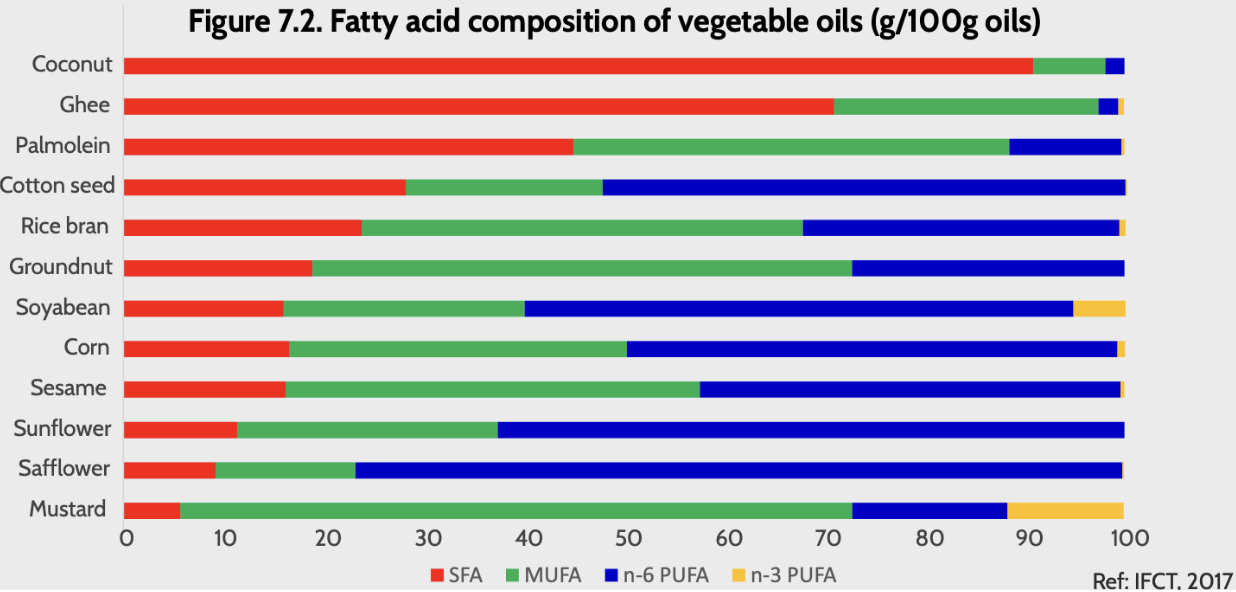
Your edible oil consumption may not seem excessive, but when it consistently exceeds what the body can process, the consequences creep in—not overnight, but quietly and cumulatively.
Let’s break down what could happen when this slowly builds up:
1. Inflammation and Immune Stress
Refined oils—like sunflower, corn, safflower, and soybean—are high in omega-6 fatty acids. While essential in small amounts, an excess without a balancing intake of omega-3s promotes chronic low-grade inflammation. This imbalance upregulates pro-inflammatory cytokines, fueling systemic inflammation and increasing the risk of cardiovascular diseases, obesity, neurodegeneration, and autoimmune conditions.
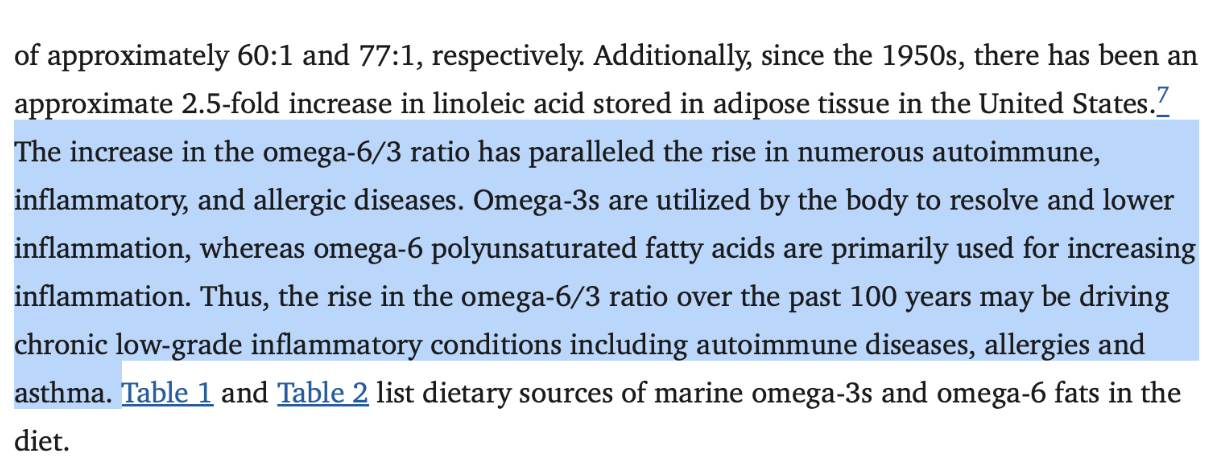
2. Oxidative Stress from Heated Oils
When oils are repeatedly heated, during frying or high-temperature cooking, they form toxic compounds like oxidized lipids and aldehydes. These molecules damage the lining of your blood vessels and stiffen your arteries.
3. Liver Overload
The liver plays a central role in fat metabolism. But excess oil, especially refined oil, can overwhelm liver function. Fat begins accumulating in liver cells, triggering inflammation and setting the stage for non-alcoholic fatty liver disease (NAFLD), even in individuals who aren’t overweight.
4. Disrupted Gut Health
Contrary to popular belief, more oil doesn’t equate to better digestion. It can slow gastric emptying, disrupt bile flow, and negatively influence your gut microbiome.
Even if you’re eating clean – salads, greens, lean proteins, your edible oil consumption could still be the hidden factor keeping you inflamed, bloated, or sluggish.
Why Just a 10–15% Reduction in Edible Oil Consumption Can Make a Difference?
We’ve seen how excessive edible oil consumption burdens nearly every major system in the body, from the liver and arteries to the gut and immune system. But here’s the good news: you don’t need to make sweeping changes to see big results.
Start small.
If you normally use three tablespoons of oil daily, a 10–15% cut means using just half a tablespoon less.
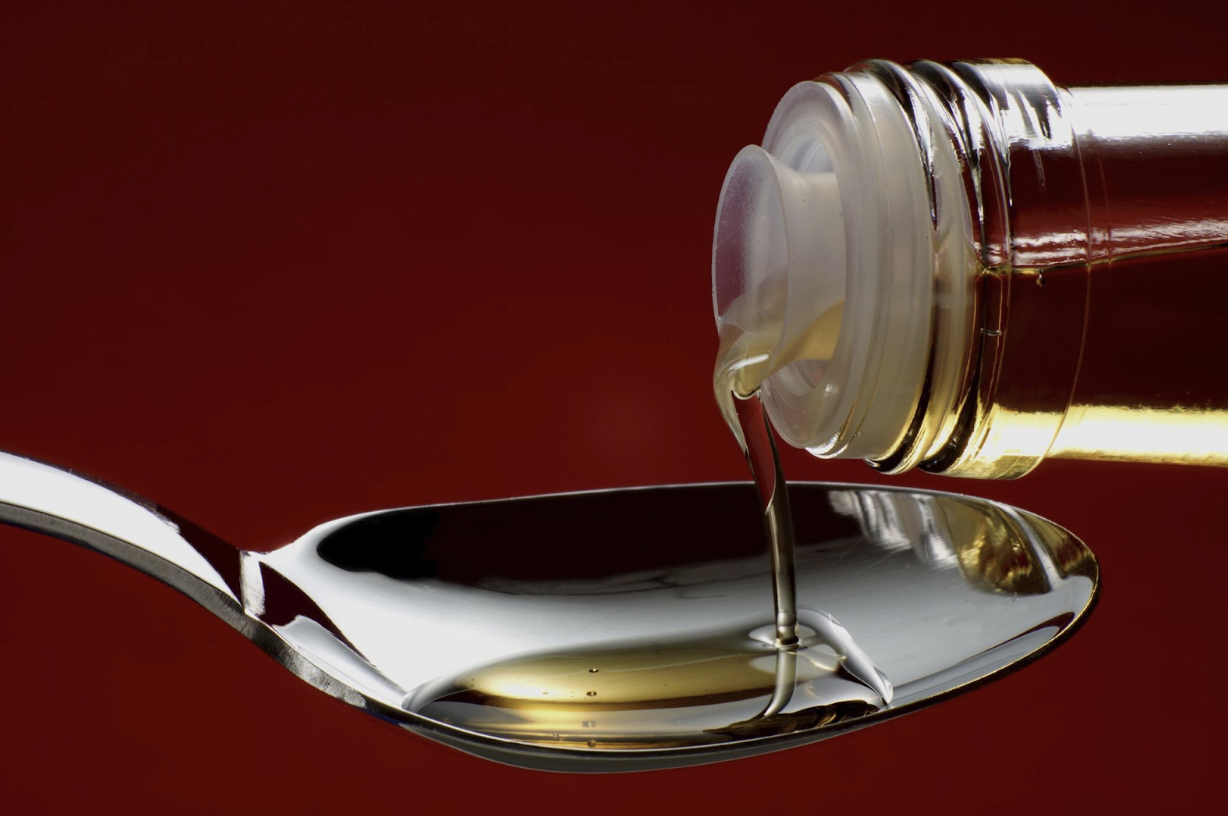
That’s less than a teaspoon per meal, barely noticeable in taste, but incredibly beneficial for your body.
Over a year, this simple shift could prevent your body from processing litres of unnecessary oil and could lead to:
1. Improved Digestion: Too much fat delays gastric emptying, leading to bloating, reflux, and discomfort. Reducing dietary fat improved digestion in individuals with functional GI issues.
2. Healthier Skin: Excess omega-6-rich oils are linked to inflammatory skin issues like acne and eczema. Reducing omega-6 fats while increasing omega-3s significantly improved skin barrier function and hydration.
3. Stronger Cardiovascular Health: Reducing saturated and oxidized fats from overheated oils has a direct effect on heart health. A major meta-analysis by The Cochrane Library revealed a 21% reduction in cardiovascular events when saturated fat intake was modestly decreased.
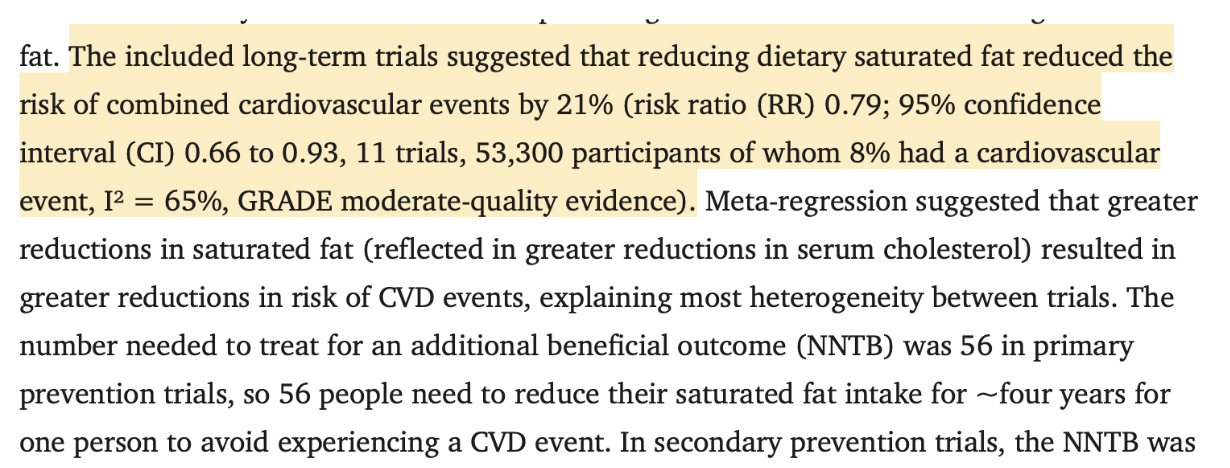
4. Easier Weight Management: Fats are calorie-dense. Even cutting out half a tablespoon of oil daily removes 60 calories—that’s over 21,000 calories a year, without dieting.
5. Sharper Energy and Clarity: When your liver and gut aren’t constantly processing excess fat, your body gets to redirect energy to repair and clarity.
5 Practical, Tasty Ways on How to Use Less Oil in Cooking (Without Missing the Flavour)
Let’s be real: the moment we say ‘reduce oil,’ most people picture bland, dry food that sticks to the pan and the tongue.
But reducing oil doesn’t mean compromising on taste—it means learning to cook smarter. Most of us aren’t even using oil for flavour—we’re using it out of habit.
So if you’re wondering how to use less oil in cooking without losing that magic in your meals, here are five simple, Luke-style kitchen hacks that work. These aren’t trends. They’re timeless strategies rooted in good science:
1. Start with Water or Broth—Not Oil
If you’re sautéing onions, garlic, ginger, or spices, try this: begin with a splash of water or homemade vegetable broth. Let the ingredients soften and release their natural aroma.
If you still want that rich, aromatic hit of oil?
Add it toward the end—and in a much smaller amount. The flavour still comes through, but you’re using half (or less) than usual.
Luke’s Tip: This trick works beautifully for Indian cooking too, especially for dals and sabzis. It keeps your food light but full of flavour.
2. Invest in Smarter Cookware
One of the easiest, most overlooked ways to cut down on oil is to upgrade your tools. Ceramic-coated skillets, claypots, and well-seasoned cast iron require minimal fat to prevent sticking.
As I often say that the right pan does half the work.
When your cookware does its job, you don’t need oil to do the heavy lifting.
Check out Kitchen Basics 101: Team Luke’s Guide to Essential Tools, Cooking Techniques, and Storage Hacks—a must-read to help you cook smarter, not harder.
3. Use Oil as a Finisher, Not a Base
This one’s a game-changer. Instead of cooking with oil, finish your dish with it.
Drizzle a teaspoon of cold-pressed extra virgin olive oil or sesame oil right before serving.
The aroma stays intact, the nutrients remain unheated, and the flavour?
Still rich and satisfying.
Perfect for stir-fries, soups, sautéed veggies, or even a warm bowl of khichdi.
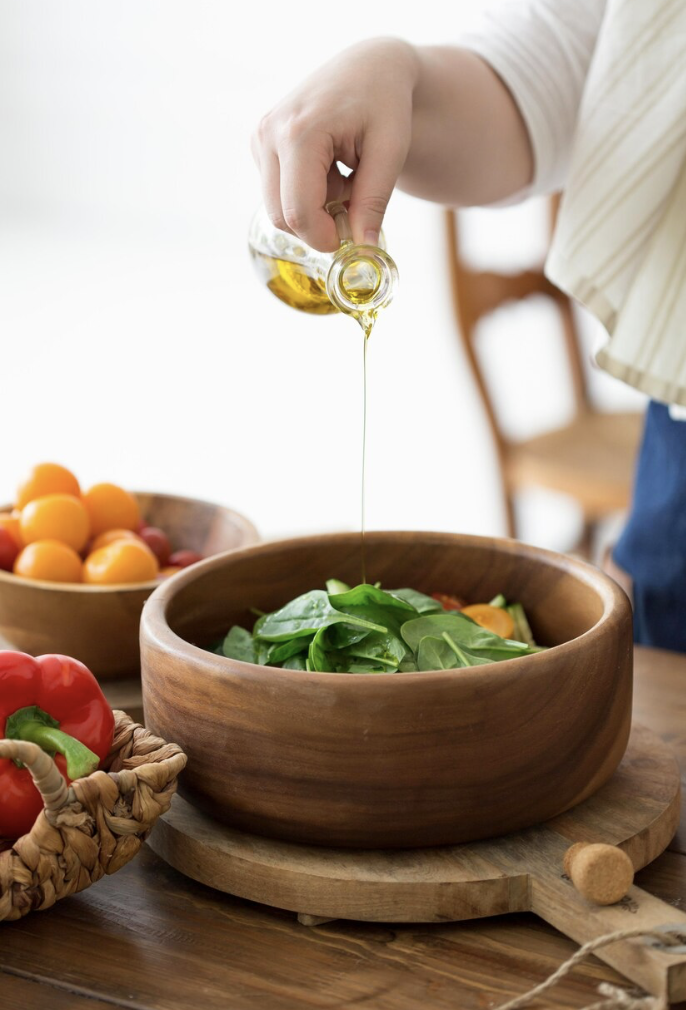
4. Master the Tempering Technique (Tadka, the Smarter Way)
You don’t need to drown your sabzi or dal in oil to get that signature flavour. A small tadka—done with half the usual oil, on low heat, and with the right spices—can transform your dish.
The key?
- Don’t pour the oil into the whole dish.
- Cook the spices in a tiny pan with minimal oil, let the flavours infuse, and then mix them in. Your tongue gets the full punch of taste, but your body gets a break.
5. Add Richness with Natural Fats
Not all fats come from a bottle. Add ground nuts, seeds, nut butters, coconut milk, or avocado to your dishes.
These whole-food fats add creaminess, satiety, and depth and they come packaged with fiber, antioxidants, and minerals, like sesame seeds in a stir-fry, cashew paste in a curry, or a spoon of almond butter in a smoothie. These fats don’t just fill you up—they nourish your cells.
Remember, not all oil is bad. Cold-pressed, unrefined oils used in small quantities can still support your health. Like everything in life and nutrition, it’s not all or nothing. It’s balance.
Confused about which oil is truly healthy?
Don’t fall for marketing gimmicks.
Read our FREE 101 Guide: How to Choose the Best Cooking Oil to cut through the noise and make informed choices for you and your family.
Disclaimer: These are not the only ways on how to use less oil in cooking. They are intended to inspire healthier cooking habits and support reduced edible oil consumption. They are not intended to treat or cure any medical condition. If you have specific dietary needs or health conditions, always consult your doctor or a certified nutritionist before making dietary changes.
Want to Take This a Step Further?
Sometimes, all we need is a little nudge—a checklist, a recipe, or a quick video to help us move from “I know this” to “I’m doing this.”
So, let’s turn awareness into action.
Checklist: Have You Unknowingly Increased Your Edible Oil Consumption?
- Are you pouring oil directly from the bottle without measuring?
- Do you use oil as the base in most meals instead of a finisher?
- Does your cookware require more oil to prevent sticking?
- Are you reheating food in oil repeatedly?
- Do you feel bloated or heavy even after ‘healthy’ meals?
If you nodded ‘yes’ to two or more, it might be time to gently reassess how you use oil in your kitchen. And remember, this isn’t about cutting it out entirely—it’s about how to use less oil in cooking without sacrificing nutrition or flavor.
Explore our cooling, healing, low-oil one-pot meals like barley khichdi, spinach lentil soup, or vegetable millet pulao.
Try these refreshing one-pot lunch recipes here.
There’s nothing more satisfying than a bowl of warm, comforting food, especially when it’s low on oil but high on flavor. These comfort meals are perfect if you’re transitioning into mindful cooking but don’t want to give up your cravings.
Get inspired by these DIY low-oil comfort meals.
The Bigger Picture: It’s Not About Fear—It’s About Freedom
Let’s be clear: we’re not demonizing oil. Fats are essential for your body, supporting brain function, hormone production, and skin health. By making informed choices about your edible oil consumption, you empower yourself to enjoy food that supports your health and well-being.
It’s about reducing excess, not creating fear.
Food should be enjoyed, not feared.
Remember, it’s not zero oil, it’s wise oil.
Balanced, measured, and always made with love.
Disclaimer: This blog is intended for informational and educational purposes only. It does not substitute professional medical advice, diagnosis, or treatment. While we share practical, research-backed insights on reducing edible oil consumption and how to use less oil in cooking and building healthier cooking habits, every individual is unique. Always consult your healthcare provider before making significant dietary changes, especially if you have existing medical conditions or are on medication.
Need help making these changes stick?
Reach out to our Integrative Experts and let’s co-create a plan that works for your lifestyle, your health goals, and your kitchen.
Because sometimes, a little support is all it takes to make lasting change.
Schedule a one-on-one consultation with our experts by calling us at 1800 102 0253 or emailing us at [email protected].
Team Luke
Start Your Wellness Journey
Feeling inspired to take the next step in your wellness journey? Connect with us to explore how our tailored programs can support your health journey. Your transformation is just a conversation away.



